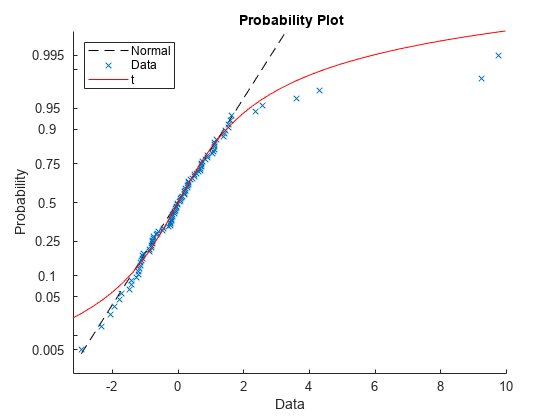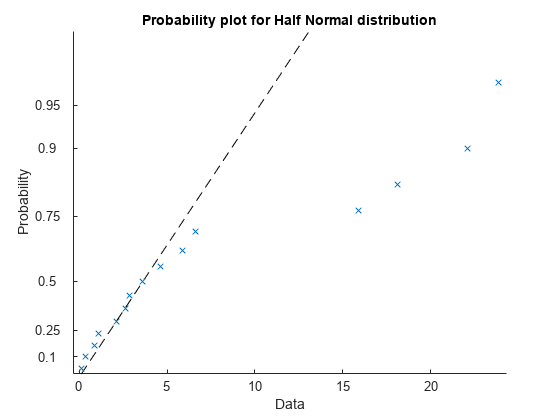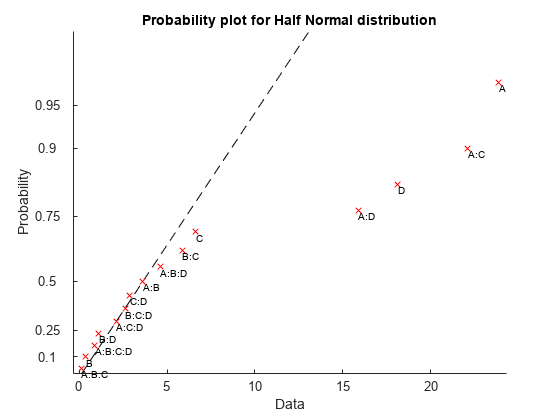probplot
확률 플롯
구문
설명
probplot(는 y)y에 있는 데이터의 분포를 정규분포와 비교하는 정규 확률 플롯을 생성합니다.
probplot은 마커 기호를 사용하여 y의 각 데이터 점을 플로팅하고 이론적 분포를 나타내는 기준선을 그립니다. 표본 데이터가 정규분포를 가지는 경우 데이터 점이 기준선을 따라 표시됩니다. 기준선은 데이터의 제1사분위수와 제3사분위수를 연결하고 데이터의 끝까지 확장됩니다. 정규분포가 아닌 분포는 데이터 플롯에 곡률을 도입합니다.
probplot(는 위에 열거된 구문에 나와 있는 입력 인수를 사용하여 ax,___)ax로 지정된 기존 확률 플롯 좌표축에 확률 플롯을 추가합니다.
probplot(___,'noref')는 플롯에서 기준선을 생략합니다.
예제
입력 인수
출력 인수
알고리즘
probplot은 표본 데이터의 분위수를 주어진 확률 분포의 분위수와 일치시킵니다. 표본 데이터는 dist의 선택에 따라 정렬되고 스케일링되어 x축에 플로팅됩니다. dist가 'lognormal', 'loglogistic' 또는 'weibull'인 경우 스케일링은 로그입니다. 그렇지 않은 경우, 스케일링은 선형입니다. y축은 확률 값으로 변환된, dist에 지정된 분포의 분위수를 나타냅니다. 스케일링은 주어진 분포에 따라 달라지며 선형이 아닙니다.
x축 값이, 크기가 N인 표본에서 i번째로 정렬된 값인 경우, y축 값은 데이터의 경험적 누적 분포 함수의 계산 지점 사이에 있는 중간점입니다. 중도절단되지 않은 데이터의 경우 중간점은 와 동일합니다.
probplot은 플롯의 선형성을 평가하기 위해 기준선을 중첩합니다. 데이터가 중도절단되지 않은 경우, 선은 데이터의 제1사분위수와 제3사분위수를 지나갑니다. 데이터가 중도절단된 경우, 선은 그에 따라 이동합니다. 데이터가 중도절단되지 않고 dist가 'half normal'인 경우, probplot은 대신 제0사분위수와 제2사분위수를 사용합니다.
버전 내역
R2006a 이전에 개발됨




